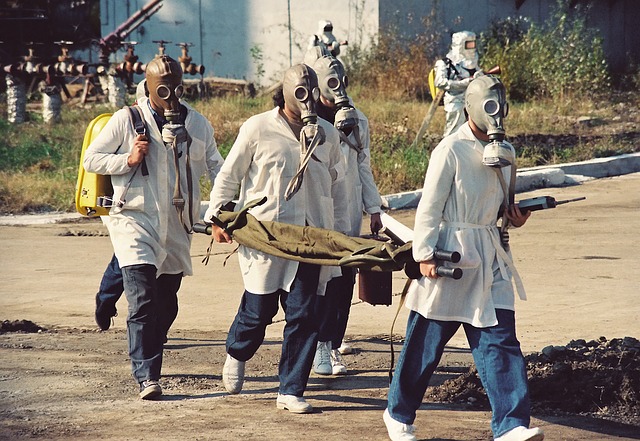
Mistakes Were Made
5 Engineering Failures and Disasters You May Have Never Heard Of
Read a summary using the INOMICS AI tool
1. Three Mile Island nuclear accident
The Three Mile Island nuclear plant is located near Middletown, Pennsylvania. On March 28, 1979, the Unit 2 reactor partially melted down. Although the nuclear accident at Three Mile Island did not result in death, it remains one of the worst engineering failures in American history. Despite the substantial consequences of the accident, it could have been much worse.
What happened in the accident? A feedwater pump failed, preventing cooling water being sent to the steam generators that cools the reactor core. The reactor itself shut down, but the pressure in the plant’s piping rose. A relief valve opened to control the pressure, but remained stuck open. Cooling water poured out of the valve, but plant operators were unaware because the instrumentation in the control room indicated that the valve was closed.
Heat continued to build up in the reactor core because of the lack of cooling water. The reactor coolant pumps were shut down because they were filling up the pressurizer that controlled the reactor’s pressure, which would have caused it to fail. Without cooling water, the core overheated, releasing radioactive gases and hydrogen into the air. Extremely fortunately, there were no injuries or major health impacts from this accident. If this accident had been even marginally worse, it could have resulted in injury and death to thousands of local residents.
 2. Oppau explosion
2. Oppau explosion
On September 21, 1921, a silo at the BASF Oppau plant in Germany holding 4,500 tonnes of ammonium sulfate and ammonium nitrate fertilizer exploded, killing more than 500 people and injuring more than 2,000. The explosion created a 19-meter deep crater and ripped the roofs off houses as far as 25 kilometers away. The mixture of ammonium sulfate and ammonium nitrate became a hard-to-move plaster-like substance. To remove it from the silo, workers had to use pickaxes. They detonated several dynamite charges to loosen the mixture and make their work easier – something at the time it was thought safe to do.
Unfortunately, it was not known that ammonium nitrate was highly explosive even when mixed, so when the dynamite exploded, the ammonium nitrate did too, causing catastrophic damage and claiming hundreds of lives. The disaster could have been even worse had all the ammonium nitrate exploded. Only 450 tonnes was estimated to have detonated, but that still managed to produce a force equivalent to 1.2 kilotonnes of TNT
3. Banqiao Dam collapse
The Banqiao Dam was built on the Ru River in western Henan Province, China, to prevent floods and produce electricity. It was designed to withstand a 1000-year flood. In August 1975, Typhoon Nina hit Henan and produced floods that were twice as large as the Banqiao Dam was designed for.
The dam collapsed, resulting in a deadly 10-meter high and 11-kilometer wide wave being formed. This wave travelled at about 50 kilometers per hour. Many settlements downstream, including a town of 9,600 directly below the dam, flooded, with the wave leaving thousands of casualties in its wake. Another 61 dams were destroyed in the next few days, drowning 26,000 people with a final death toll of more than 220,000 from famine and from disease from the contaminated water.
When the dam was built in 1952, a hydrologist involved in the design, Chen Xing, recommended 12 sluice gates be installed, or else the dam would fail. He was removed from the project, and only five sluice gates were installed. The dam started to crack and leak, and Soviet engineers were brought in to reinforce the dam. In 1961, Chen Xing was put back on the project, and repeated his warnings. Chinese authorities, who had dubbed the Banqiao Dam “the iron dam”, were not pleased and again removed him from the project.
After the Banqiao Dam disaster, Chinese authorities reviewed its reservoirs throughout the nation. Chen Xing was brought back yet again to help clear the river channels. This time, his advice was heeded, and many of the dams that were destroyed by the floods were rebuilt to his standards.
4. Sultana explosion
The Sultana was a wooden steamboat that ran regularly between St. Louis, Missouri, and New Orleans, Louisiana, during the American Civil War. On April 23, 1865, it experienced issues with its four boilers. Although they needed repair, the boat was contracted by the United States government to carry former Union prisoners of war from Confederate territory to Union territory. And not wanting to miss out on this contract, the captain ordered the boilers to be patched (rather than fully repaired).
Although the Sultana was only designed to carry roughly 375 passengers and crew, it left port with about 2,400 people on board. This overcrowding would later prove to be catastrophic. Because of the faster river current due to the spring thaw, and the severe overcrowding on the boat, there was increased pressure on the newly patched boilers. On April 27, 1865, three of the four boilers exploded, claiming the lives of over 1,800 people.
Since John Wilkes Booth, President Lincoln’s assassin, was killed the day before, that event dominated the media, sweeping the Sultana tragedy under the rug. Ultimately, no one was held accountable for the worst maritime disaster in American history.
5. Hyatt Regency walkway collapse
On July 17, 1981, two walkways collapsed onto a dance taking place in the lobby of the Hyatt Regency Kansas City Hotel in Kansas City, Missouri. One hundred and fourteen people lost their lives, while another 216 were injured. This tragedy was the deadliest non-deliberate structural collapse in American history. These two walkways were suspended from the ceiling in the hotel’s multi-story atrium. Each weighed roughly 29,000 kilograms. The fourth level walkway was right above the second level walkway.
What caused the collapse was an unsafe change in the walkways’ design. Instead of installing the six steel hanger rods to connect the second-floor walkway to the ceiling as planned, the contractor opted to use tie rods to connect the second-floor walkway to the fourth-floor walkway. This change meant that the rods supporting the fourth-floor walkway took on double the load that was originally intended.
The design finally failed during the dance, when 40 people were gathered on the second-floor walkway and 20 were gathered on the fourth-floor walkway to observe the dance. The walkways, already under extreme strain, couldn’t handle that many people, and collapsed onto the dance below. The rescue operation took 14 hours because the debris weighed almost 60 tonnes.
-
- Programme de Maîtrise
- Posted 5 months ago
MSc/PhD in Economics (IDEA) - Barcelona
Starts 1 Sep at Universitat Autònoma de Barcelona in Espagne
-
- Conférence
- (Hybrid)
- Posted 1 month ago
5th Interdisciplinary Conference on Electrics and Computer
Between 15 Sep and 16 Sep in Chicago, États-Unis
-
- Workshop, Conference
- (Hybrid)
- Posted 6 days ago
International Conference on Applied Business and Economics - ICABE 2025 - 21th Edition - A HYBRID CONFERENCE
Between 3 Nov and 5 Nov in Kuwait City, Koweït













